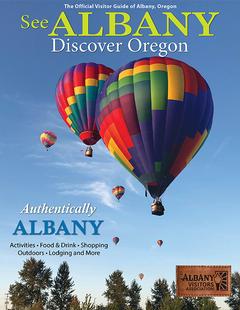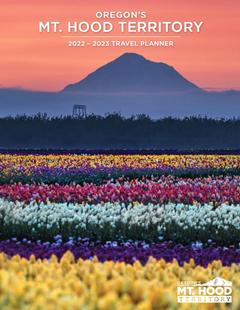Contact Info
Madras, OR 97741
Basics
- Size:
- 779 acres / 1.2 sq. miles
- Max. Depth:
- 7 feet
- Elevation:
- 5450 feet
Description
Sparks Lake is located about 25 miles west of Bend off the Cascade Lakes Highway. The lake was named for "Lige" Sparks, a pioneer stockman of central Oregon. Except for possible early-day trappers, the first organized group of white men to visit the Sparks Lake area was a Pacific Railroad survey party led by Lts. R. L. Williamson and Phil Sheridan, accompanied by Dr. John S. Newberry, physician and scientist.
In seeking a pass through the mountains to the north, they traveled the Green Lakes trail in August 1855. They returned in September and evidently traveled by the Old Horse Lake Trail from its junction with the Green Lakes Trail and passed by Moraine Lake and on to Wickiup Plains. It is guessed that this group went past Devils Pass, Devils Lake, and followed the approximate route of the north Century Drive.
The lake was formed about 10,000 years ago when lavas from the Mt. Bachelor Volcanic Chain blocked the upper Deschutes River. Sparks Lake is a large, shallow, trout lake located on the northwest edge of Mount Bachelor, and is the first of the high lakes you see from the Cascade Lakes Highway west of Bend. The views of South Sister, Mount Bachelor, and Broken Top are breathtaking. Prior to 1997, Sparks Lake was a brook trout fishery and, although brookies may still be available, the lake's featured species will be introduced cutthroat trout.
Sparks Lake covers 400 acres and has a maximum depth of 10 feet. Fascinating lava formations surround the lake. At several points along the shore, the lake's water disappears into the edges of the lava, producing exotic noises as the water drains out. The deepest area of the lake is the far south end.
Brook trout average 11 inches with a few to l 8 inches, but numbers are small. The main (northern) body of the lake is very shallow, and the extremely clear water requires long, light leaders and stealth.
A narrow channel about a half-mile long connects the north and south portions of the lake. Smaller fish are usually caught in the channel and larger fish in the lower lake. A 2.5-mile trail leading to the southern portion of the lake starts near the highway. This lower portion of the lake is almost completely surrounded by lava flows, making shore access difficult except by the trail. Sparks Lake is most easily accessed by boat.
Sparks Lake is open to fly angling only. Debarbing hooks helps reduce injuries to released fish. Streamers are frequently fished during the day and dry flies in the evenings, with bucktails and Mickey Finns popular for trolling. The brook trout often prefer the brighter colors of yellow and orange. Favorite patterns include tied-down Caddis in sizes 8 to 14X, Royal Wulffs, Royal Coachmen, Adams, and Humpys in sizes 12 to 18. Sometimes realistic nymphs are more effective. Mornings and late afternoons usually provide the best results, and during some late afternoons, there are often some good hatches.
At an elevation of 5,400 feet, access to Sparks Lake can be blocked by snow until quite late in the year, and like most of the high lakes, some of the very best fishing is right after ice-out. Some fly anglers will don snowshoes or skis in order to take advantage of early hungry trout.
Low water levels at Sparks Lake late in the season can cause difficulties for boaters. A good boat ramp is located at the end of the main road into the lake but may not be usable during low water. Always consult the current ODFW before fishing for fishing regulations.
Fishing
Fish:
Cutthroat Trout
Fishing Methods:
Details
Size:
Max. Depth:
Elevation:
Water Access:
Camping Info
Amenities
Map + Directions
Basic Directions
Sparks Lake is located about 25 miles west of Bend off the Cascade Lakes Highway (Forest Service Road 46).
















